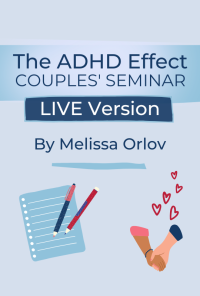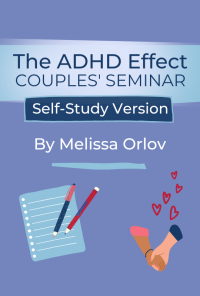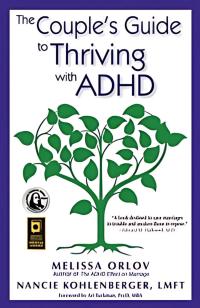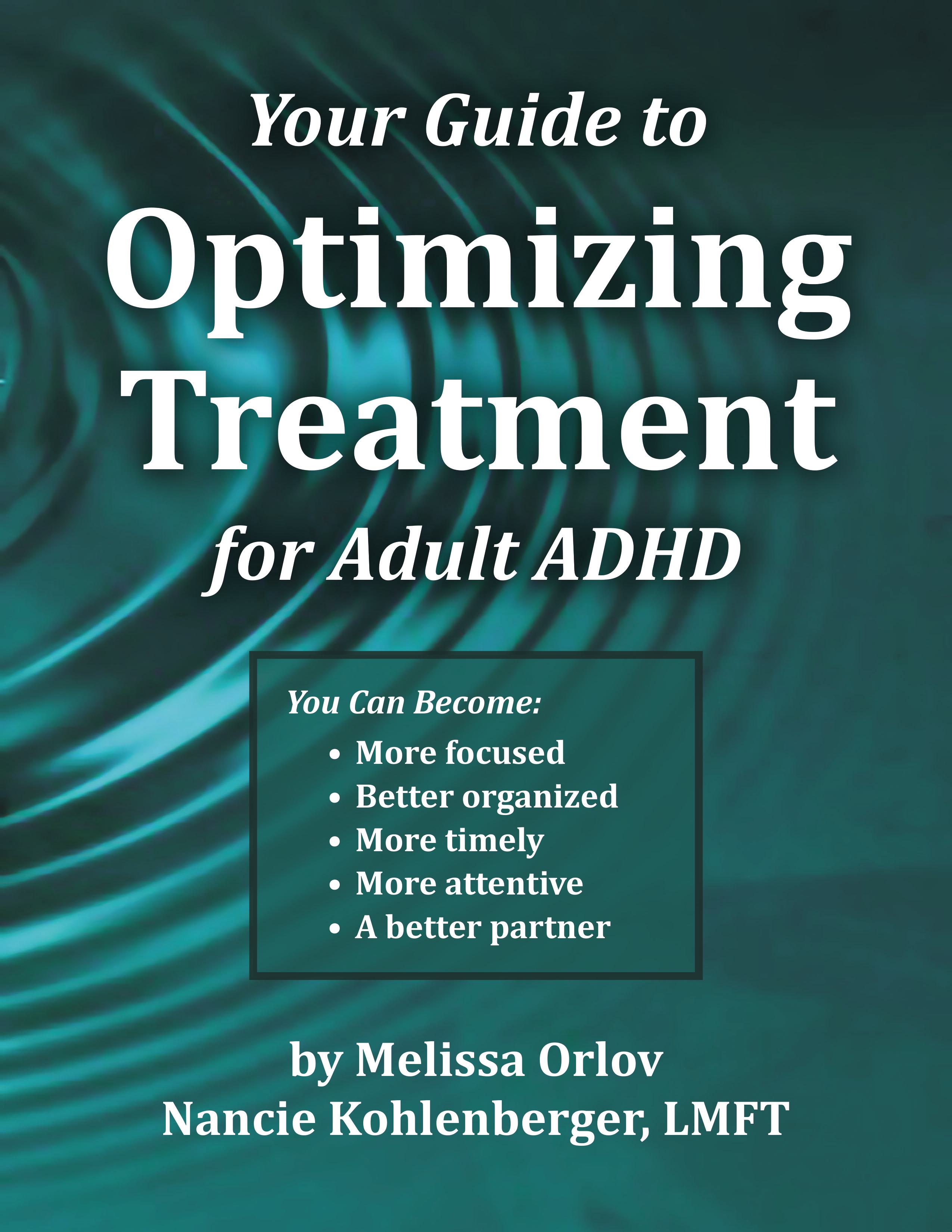Coming to this forum was orgiginally a somewhat frustrating and disheartening expereince. Even thought my aim was to find out more about my ADHD....it seemed at first that I knew less than I had originally thought? This was the frustrating and disheartening part since it seemed that I just couldn't place myself very well into the stories and situations that I was reading in the posts here? In some ways yes and in some ways defintiely no!!! To find out more of why this was.....I set about the task of trying to figure this out formyself since this is not something that I go over with my therapist since it is not the focus of why I go to him. None the less....my curiosity got the better of me and I had to know. A bit compulsive yes but that is part of who I am in that regard....ever curious.
So...since it was this process and coming here in the first place which brought me to find out more about myself and my ADHD,....I thought at the very least I would share what I have discovered on my own and now feel I'm getting closer and closer to getting things narrowed down. To the point....my quetstions in this regard have been satisfied enough for me to move on and simply use this information to keep the negative tendencies in mind along with all the other things that I have been working on to improve and make the most out of what I've got to work with. Yes....optimism has never been a problem for me....
To start.....here is part of the reason why...
First....I'm a INFP personality type which reads as follows..
Introverted Feeling
INFPs live primarily in a rich inner world of introverted Feeling. Being inward-turning, the natural attraction is away from world and toward essence and ideal. This introversion of dominant Feeling, receiving its data from extraverted intuition, must be the source of the quixotic nature of these usually gentle beings. Feeling is caught in the approach- avoidance bind between concern both for people and for All Creatures Great and Small, and a psycho-magnetic repulsion from the same. The "object," be it homo sapiens or a mere representation of an organism, is valued only to the degree that the object contains some measure of the inner Essence or greater Good. Doing a good deed, for example, may provide intrinsic satisfaction which is only secondary to the greater good of striking a blow against Man's Inhumanity to Mankind.
Extraverted iNtuition
Extraverted intuition faces outward, greeting the world on behalf of Feeling. What the observer usually sees is creativity with implied good will. Intuition spawns this type's philosophical bent and strengthens pattern perception. It combines as auxiliary with introverted Feeling and gives rise to unusual skill in both character development and fluency with language--a sound basis for the development of literary facility. If INTPs aspire to word mechanics, INFPs would be verbal artists.
Introverted Sensing
Sensing is introverted and often invisible. This stealth function in the third position gives INFPs a natural inclination toward absent- mindedness and other-worldliness, however, Feeling's strong people awareness provides a balancing, mitigating effect. This introverted Sensing is somewhat categorical, a subdued version of SJ sensing.( hidden strength * ) In the third position, however, it is easily overridden by the stronger functions.
Extraverted Thinking
The INFP may turn to inferior extraverted Thinking for help in focusing on externals and for closure. INFPs can even masquerade in their ESTJ business suit, but not without expending considerable energy. The inferior, problematic nature of Extraverted Thinking is its lack of context and proportion. Single impersonal facts may loom large or attain higher priority than more salient principles which are all but overlooked.
* SJ sensing = Guardian Temperment (hidden strength)
Guardian temperament
The Guardian temperament is one of four temperaments defined by David Keirsey. Correlating with the SJ (sensing–judging) Myers-Briggs types, the Guardian temperament comprises the following role variants (listed with their corresponding Myers-Briggs types): Inspector (ISTJ), Protector (ISFJ), Provider (ESFJ), and Supervisor (ESTJ).[1
Description
Guardians are concrete in communicating and cooperative in pursuing their goals. Their greatest strength is logistics. Their most developed intelligence role is either that of the Conservator (Protectors and Providers) or the Administrator (Inspector and Supervisor).
As the security-seeking temperament, Guardians are practical and frugal types. They share certain core values, among them the belief in a strong work ethic, the need for people and institutions to be responsible, the importance of following the rules and of serving one's community. Guardians value experience, and they seek a tangible return on their investments. Believing in common sense, they are not attracted to idle speculation. They are the glue of civilization, maintaining and nurturing institutions that have been established by the dint of hard work. They tend to be conventional and cooperative in their work, wanting to make sure everybody gets what they deserve, no more and no less. They follow the rules and conventions of their cohort or group and expect others to as well.
Interests: In their education and careers, Guardians' primary interest is business and commerce, with an eye toward practical applications in managing material things. They are preoccupied with maintaining the morality of their group.[2]
Orientation: Guardians have a strong sense of duty. They forgo the pleasures of the moment to prepare for unseen eventualities. They regard past events with a sense of resignation. They guard against the corruption of outside influences, and look to past experiences to guide their present choices.
Self-image: The Guardians' self-esteem is based on their dependability; their self-respect on their beneficence; and their self-confidence on their respectability.
Values: Guardians are concerned about the well-being of people and institutions that they hold dear. They trust authority and seek security. They strive for a sense of belonging and want to be appreciated for their contributions. They aspire to become executives, whether by managing their own households or by running a multinational corporation.
Social roles: In romantic relationships, Guardians regard themselves as helpmates, working together with their spouse to establish a secure home. As parents, they focus on raising their children to become productive and law-abiding citizens. In business and social situations, they are stabilizers, establishing procedures and ensuring that the material needs of the group are met.
Stress
Guardians often experience stress when rules, expectations, and structure are unclear, or when those around them do not act according to established norms. The extraverted (expressive) types—Providers and Supervisors—may respond by becoming critical of others. The introverted (attentive) types—Protectors and Inspectors—may take on the burden of trying to correct the perceived faults in the system themselves, Guardians also experience stress when the results of their hard work go unnoticed or unappreciated. [3] This is what I do.....I'm a fixer.
Traits in common with other temperaments
Keirsey identified the following traits of the Guardian temperament:[1]
Concrete in communicating (like Artisans)
Guardians focus on facts. They are concerned about practical needs like providing goods and services that help society function smoothly.
Cooperative in pursuing their goals (like Idealists)
Guardians value teamwork. They are committed to preserving established social institutions. Cautious toward change, Guardians work within the system to ensure that all contingencies are considered.
FYI: This is where I have trouble comunicating with my wife....she drives me crazy at times because she is not on the same program I am.....just the facts ma'am. lol
That pretty much sums it up right there. For the most part....this is me.
But there are conflicts and contracictions in this model that really don't seem to fit? One of them is that I'm really more extraverted in some ways and more introverted in others? Combined type ADHD seems to fit here too but it doesn't say anything about my personality.....only the symptoms I display or have predominantly.
Enter this now into the story....
Cyclotymia / Artist type personality. As defined...Cyclothymic personality is a non clinical personality characterised by mild cyclothymia, with alternating and recurring paterns of depression and elation. It can can be conceived of as being at the "normal" end of the bipolar spectrum.
Cyclothymic personality (see also Ch. 189)
In persons with this personality disorder, high-spirited buoyancy alternates with gloom and pessimism; each mood lasts weeks or longer. Characteristically, the rhythmic mood changes are regular and occur without justifiable external cause. This personality disorder is a spectrum variant of manic-depressive illness (bipolar disorder), but most cyclothymic persons do not develop bipolar disorder. Cyclothymic personality is considered a temperament, present in many gifted and creative people.
The good news here it seems that there are two sub catagoies to look at.....hypomania and immodithymic. Without going into this depth....the latter one is me. The other one is a bit more problematic it seems and I am lucky to have escaped that one if not completey to say......it is the one that can cause real problems in BP patients when they go manic. In this case....my tendencies steer more towards the depressive side ( melancholy or stoic ) which mostly hurts me not others unless it goes on too long. But having said that....this is where I can withdraw and not connect with other people including my wife. As far as culprits go....I need to keep and eye on this one. The manic or up beat side like I said has not posed much of a problem for me since my early to mid 20's. Shortly after this time I got hit with my first issues with some OCD kind of behaviors and depression but these too subsided and disappeared shortly after they emerged. This explains a lot!!!
It also explains why....when I first came to this forum and revisiting the Narcissism topic once again....why I was having some self doubt at first (thinking...am I really that bad???O shit....here we go again...am I a Narissist!!! aaaahhh!!) Not so much ( as my T had to keep reinforcing with me only to say...."a flavor of it" in some ways but that's not what he is treating me for....whew!!) but if I go back in time to when I was a teenager and in my early twenties....I defintely could see the compensatory Narcissist in me during that period (vulnerable, imature Narcissism) coming out all over the place back then. As it was and still is today....these were my hard learned lessons and times of regret that I use with a great deal of humility to serve for that very reason. Learn from your mistakes and don't do those again!! lol
This also fits the INFP profile of where I tend to end up on my own or "middle ground" as I call it:)
So as to my negative tendencies and how they affect other people.....I tend to fall more depressive more than manic or at least.....the manic hasn't been as much a problem especially as I got older. In my teens and twenties this did present some problems for me even if short lived. Since then....that part seemed to mellow way down. The "H" in my ADHD also went down at the same time as well which leave me with the rest and what I have to deal with today.
So why is this? Here's at least one theory. Dr Minato-Ku seems to be "the man" in this field of neuro science and his stuff pops up all over the place in this specific catagory..
My Original Theory-1
Tadashi Kon(Shinagawa Psychosomatic medicine Clinic)
〒108-0075 2-14-10-10F Kounan,Minato-Ku,Tokyo,Japan
DAM Theory (Depressive-Anankastic-Manic Cells Theory :Conprehensive biological theory for manic depressive disorder ,mood disorder and premorbid character traits)
Tadashi Kon(Shinagawa Psychosomatic medicine Clinic)
〒108-0075 2-14-10-10F Kounan,Minato-Ku,Tokyo,Japan
1. DAM Cells :Enthusiasm, regularity and the persistence of negative mood are biological indexes
When we assume chronic continued stress to a neuron, three types of neurons are predictable according to the responses to the repeated stimulation.
First, there are neurons whose reaction speed gets gradually faster, such as neurologic kindling (epilepsy) and hysteresis (schizophrenia). I call these types of neurons M (Manic) neurons as they relate to the manic state. They also relate to enthusiasm, excitement (hyperthymia), and energy.
Secondly, there are neurons that always react steadily to the repeated stimulation.
I call these types of neurons A (Anankastic) neurons. A neurons are an element of regularity.
Thirdly, there are neurons whose response to the repeated stimulation rapidly diminishes. I call these types of neurons D (Depressive) neurons because they relate to the duration and weakness of the negative mood. The majority of the human brain neurons are considered to be this D type.
2. DAM Theory : the onset mechanism of depression
When M neurons respond more and more actively to the recurrent sustained stress, the body is in a manic state. When M neurons burn out and stop functioning, D neuron traits emerges, and the body is now in a state of depression. Once M neurons recover from the damage after a sufficient interval, they restart their activities and become in a manic state again. Repetition of this procedure creates symptoms of bipolar disorders. I think that depression doesn’t exist alone. It is always accompanied by a manic state where M neurons are activated, at least immediately before the depression, no matter how subtle the manic state is. The obsession element of A neurons appears and disappears because the obsession comes to the foreground and recedes into the background according to the state of bipolar disorder. When M neurons cease to function and A-type neurons are enough in number, the obsession comes to the foreground instead of depression. If we assume that M neurons are related to circadian rhythm, insomnia and diurnal change (depressive mood and inhibition are strongest in the early morning and remit in the afternoon to the evening) are explained by the lack of M neurons’ element.
3. Explanation of Premorbid Character
Quantity and distribution of M, A, and D neurons in the brain explain part of premorbid characters. Intermediate types of the three types will exist and they construct a continuous spectrum.
(1) Brains with high M neuron elements are enthusiastic, having characters of bipolar and cyclothymia. BP (Bipolar mood disorder) Ⅰ and Ⅱ belong to this type. BPⅠ consists of a manic state and depressive mood; BPⅡ consists of a hypomanic state and depressive mood. One affected by bipolar disorder with a premorbid character as cycothymia belongs to this type. The immature form of depression is for immature and narcissistic cyclothymia, and is usually an early-onset type. It is difficult to distinguish the immature form of depression from personality disorders. Avoidant depression is also close to this type.
When the society itself is in a hypomanic state, that of BPⅡwill be hidden. From the Meiji era to the high economic growth period, BPⅡ were diagnosed as single episodes of major depressive disorder. Madness towards the war and the devotion to company organizations probably belonged to a hypomanic state. Good adaptation often turns out to be a hypomanic state.
(2) Brains with significantly more A neuron elements than M neuron elements are regular and have strong compulsive elements. Typus melancholicus, premorbid character of melancholic type depression, belongs to this type. While A neurons are responding to repeated stimulations, compulsive tendencies are presented. After A neurons get too tired, they cease to function. At that time, usually, M neurons are also too tired and resting, and they are in a depressive mood. If M neurons recover quickly, mixed episodes of manic-depressive are shown. Retreat neurosis is close to this type.
Tardy and nonchronic type of atypical depression is close to the melancholic type. Premorbid character of juvenile-onset chronic type of depression has not been clearly explained yet. Beard type depression is said to occur in the narcissistic immature type character when the office (workplace) is melancholic (where perfection is required of workers).
(3) Brains with relatively few M neuron elements and A neuron elements possess weak characters without strong enthusiasm nor regularity. People with modern weak characters have lost self-confidence superficially, but mostly hold on to exaggerated egos inside them. Sometimes exposure of that exaggerated ego is observed. That is, it is not a unilateral weakness, and it strongly possesses a narcissistic element most of the time. It is a combination of weakness and immature narcissism. When it becomes depression, one may call it an immature narcissistic type of weak character type depression. However in DSM it is close to dysthymic disorder(long lasting mild depressive tendency) as the symptom of the first, Ⅰ axis, and it is close to dysthymia-affinity-depression among modern types of depression.
(4) Brains with plenty of M neuron elements and A neuron elements show immodithymic characters with strong enthusiasm and regularity. According to the temporal profile of functional breakdown and recovery of both elements, manic, depressive, mixed episodes of manic-depressive, and further mixed episodes with compulsive tendency are observed. It is difficult to distinguish from personality disorders, if one onsets around 20 years old.
It appears that I fit more closely in what I know of myself in the highlighted description and this which explains this sub catagory better...........and this seems to make sense. I'm thinking here, my A and M neurons are the trouble makers but I've got plenty of both to get motivated and enthusiastic despite my down or depressed moments in order for D's to work their magic and get me through the tougher times and back to square one again.
Bottom line....this helps explain the negative aspects of my personality better going along with a combined type of ADHD, INFP, Extroversion (externally) and Introversion (internally) , Artistic ability and the balancing act that this all has on me and why the "swings" as I call them. Since it's not technically Bi-polar and just tempermant ( I agree here) this makes it more subtle and many times hard to notice even if myself (the elusive mysterious part)
It would seem as it does to me in real life.....my brain is fighting to stay in the middle but at least I got enough on either side of this doing the work for me to keep me there. The trick has always been to stay consistant and not get too far a field in either direction. This much I alrady know that I have been able to manage much better with medication and by learning and knowing what it is and why it does what it does. That initself makes all of this a little less mysterious and a lot more optimistic for the future:)
J








Comments
I took the Myers Briggs test
I took the Myers Briggs test earlier this year. I am an ISTJ. my main take away from learning this was that I like order and routine. Oh, the irony! I live with two people with ADHD. I haven't known order or routine for over two decades. The lady that administered the test told me that if I was forced to live outside of my natural psychological functions it would cause depression. That was a lightbulb moment for me.
My plan was for my husband to also take the test so we could better understand ourselves and each other. But, my husband never took the test. Over the last 15 years I have spent many hours taking classes, watching seminars and reading books on parenting and marriage. The only thing that I learned for sure is that none of the principles or techniques presented are effective on the ADHD brains that I live with in my house.
You have obviously spent more time on this than I have. A lot of what you wrote about is Greek to me. Maybe with an ADHD brain it is necessary to go much deeper than just the Myers Briggs survey?
Something You Said...
made me laugh:)..if I was forced to live outside of my natural psychological functions it would cause depression.
I think for us...everywhere we go is living outside of our natural psychological functions which is why we get so depressed! lol In reality.....I think this is not true either but it is what is feels like at times.
As far as the brigss meyer tests are concerned....I took the first one when I was in my early 30's since one of my sisters is a career counselor/psychologist at a University and she does these for a living. It's interesting to note here....I have taken a few of them over the years and they have changed as I have changed in my own thinking. At this point....I think it's settled in now to where it stands.
I don't think that I put so much weight into the test themselves as much as seeing the exact same thing appear in three different sources and how they lined up so well together with how I see things a feel about myself in a objective way. I don't think I am nearly as biased in favor of myself as I use to be and some of the changes in the test results are due to the fact that they were done before and after therapy. I attribute the differences in that.
More than anything else....the Greek parts are actually making sense I understand them which seem strange and yet encouraging. It says that I an actually see these things in myself now and can identify these things whether I am actually right on the money or not.
What I really want to know and have not found out about is the connection to the inherent or God given artistic ability, Cyclothymia and ADHD? I have wondered why or how these relate so well together and seem to fit perfectly into the same space? Without knowing about anyone else with ADHD.....it does appear that Cyclothymia and ADHD appear to overlap a lot? The Briggs -Meyer test is just more things that seem to fit nicely to one another.
As far as the Neuro-science part.....I don't know if all people with ADHD are this curious about this kind of stuff or not.....I've always been this way and a lot of it is just something that I enjoy doing but it certainly isn't necessary to do for what it's worth.
Interestingly....I took another test on personal strengths having ADHD that was provided in a link on this site a year ago. Out of the 20 items listed in the results.......Curiosity was #1 on my list. No big surprise there. lol
That kind of explains this better if you were wondering about your husband or other people with ADHD. I'm a Geek...what can I say? lol :)
Wow! That's a lot of information!
J,
I gotta admit I did not read every single word in your post! I did skim it several times.
At various times in my life I have taken many personality tests. Amazing how accurate they are; especially when I am willing to look at the list at the end, the one that points out how 'who I am can potentially negatively impact my life', they help me.
Something funny I have to admit: I took some for my spouse, too! I determined what the correct responses were for him, and discovered, "If he would only,. . . . . "
LOL. That was too silly of me. I am NOT the Holy Ghost Junior.
I found this quote. Not sure if it belongs to Becky Walsh, but it is amazing : "The best way we can ever help someone, is to remind them how amazing they are, all the amazing things they have done in their life, and reaffirm that we trust them to make everything OK. That way we keep reminding them of the skills they have to follow the future they want, without having to fall back for help."
What I gotta keep reminding myself is that I MUST place my trust in my spouse - - -to do what is best for him. I find it extremely hard, but I am working on it.
The real trick is quit thinking, "I want him to want what I want!!" Silly, silly me.
All the "What ifs" are my worst enemy. Especially, "What if he really decides he doesn't want to. . . . . . ."
Liz
*******I have recently seen a lady looking back at me from the mirror - and I said, "Hello friend. Long time no see!""*******
If All Else Fails Liz
Reminding my wife how awesome she is on a daily basis seems to never be the wrong thing to do! lol I like the quote and I think you can't go wrong there.
Funny.....I took at test earlier this year trying to figure out what sub-catagory of ADHD I fit into......and then for fun, I had my wife take the same test for me (like you did for your H). Surpisingly....the results came up pretty close to the same except for one aspect.....the parts about how I "feel" internally not what other people see on the outside. Kind'a makes sense? lol
What that revealed was she didn't see my anxiety even though I certainly know it's there! lol It was interesting at least to see that I tend to not show it or hide it? Either way at the very least......I'm not sharing it with everyone else. That's the good part.....the bad part is that my wife or other people are not able to tell this or read this about me by how I behave or I appear. This was telling. People aren't mind readers.....sometimes, you have to say when you feeling anxious or stressed and let other people know . I'm really bad about saying it too so that was a good experiment in finding this out.
That is how you are taught at least growing up for some of us......big strong guys are not suppose to cry or appear emotionally afraid or anxious....that was always frowned upon and reinforced by your peers. I think that may have a lot to do with why so many men with ADHD try and hide or deny it exists. Don't want to appear weak or that something is wrong........this can only been seen as bad.
It is how we were taught......rethinking this more and more as time goes on as not being such a good thing after all:)
J
I try to see my spouse, not psychologically examine him
J,
There are parts of his background, that can cause me to be suspect of what is happening in his head. I have to let that go. I cannot dwell.
I know when I met him, he clearly saw many dynamics in his parents relationship that were not so great. After 10 years of marriage - starting when she was 27 and he was 40 - and the birth of their 7th child, that marriage was over. She spent the rest of her life trying to get him to like her. He stayed - from outside appearances - despising her, and due to some poor life choices he made, he said he was biding his time until he died. He always appeared short tempered and angry, and as I am experiencing with my spouse, what people outside of the immediate family saw was, he was kind, and happy and wonderful. As 'good' Catholics, my spouse's parents stayed married till they died. In the whirlwind romance of our courtship, my spouse clearly did not want that for himself. Me either.
Thus, I have been very willing to be patient, make sure I am clearly doing "Liz's business," and working on what God puts on my heart as areas to be changed.
And, I know that being in the same living place with a man who is angry, defensive, and quicker to blame issues on my demons then look for alternatives, I no longer find any joy in my marriage. Romans 12:18 tell me "If it is possible, as far as it depends on you, live at peace with everyone." I want to find joy and happiness, and I want that for my spouse, too. As far as it depends on Liz, I have nothing left. The marriage seems, for all intents and purposes, to be dead.
Liz, well she is alive and kicking, and on her way! There are some cross times, that I choose to keep between God and myself, but for the most parts I love the idea of WYSIWYG. I want people to know that I am the same when I am at home, as I am when I am with them :)
Liz
*******I have recently seen a lady looking back at me from the mirror - and I said, "Hello friend. Long time no see!""*******
I Don't Know My Bible Versus...
very well since I haven't spent a lot of time in church.....but I did learn and remember a few basic ones......."turning the other cheek." is one of them. It does go along with what you are saying. I remember having a tough time wih this one thinking.."well what if?......then what?"
I now understand this better and it does go right along with what you are saying. These things may not come right back to you in the moment in connection to other people....but in the long run and in time there are only good dividends that always seem to come from following the basics.
If all else fails....the Golden Rule seem to always work too:)
J